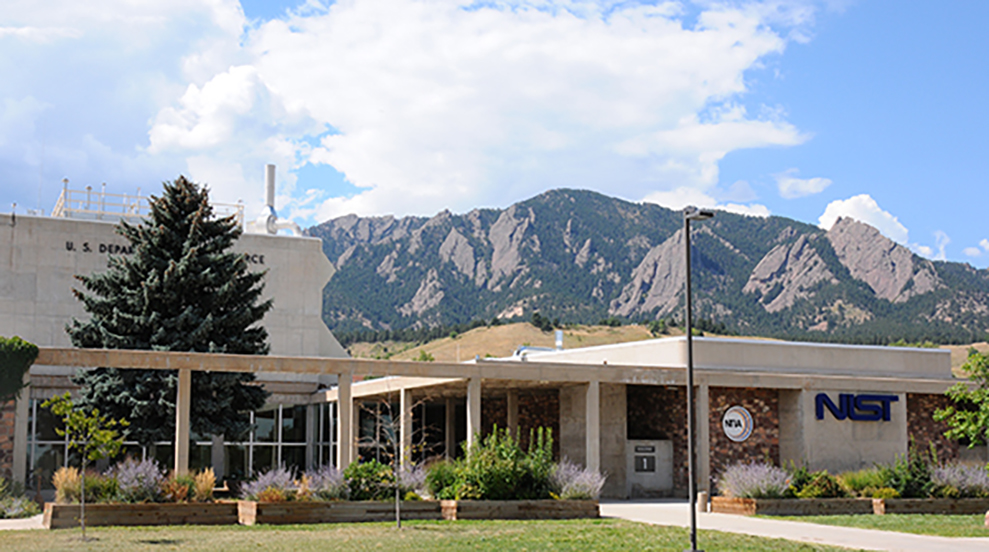
A new partnership will help Brown researchers work at NIST facilities in Boulder, Colorado and Gaithersburg, Maryland.
Credit: NIST
Brown University and the National Institute of Standards and Technology (NIST) have entered into a partnership that will enable Brown scientists to work in state-of-the-art NIST laboratories as they advance research and develop new discoveries.
Under the program, called the Professional Research Experience Program (PREP), NIST will provide funding to cover living expenses and other needs while Brown researchers work at NIST's locations in Gaithersburg, Maryland, and Boulder, Colorado. Funding is available for faculty members looking to establish long-term partnerships with NIST researchers, as well as for postdoctoral scholars and graduate students seeking to learn new research techniques using specialized laboratory tools.
_0.jpg)
NIST Gaithersburg Lab
NIST Gaithersburg has agreed to provide up to approximately $6.8 million in available funding over five years, while NIST Boulder will provide up to $6.6 million. The program is open to any Brown researcher whose work is in the physical sciences.
"This is a fantastic opportunity for faculty and students at Brown to collaborate with some of the best researchers in the world in some of the world's most advanced facilities," said Larry Larson, dean of Brown's School of Engineering. "For NIST, it's an opportunity to tap into the expertise of the faculty here at Brown as well as help to train — and then potentially to hire — some of our exceptionally talented grad students and postdocs."
Established in 1901, NIST is one of the oldest physical science labs in the U.S. It works to develop and establish measurement standards used in everything from nanoscale devices and microchips to skyscrapers and global communications networks. NIST labs also work to develop new technologies based on cutting-edge research.
Four units at Brown — the School of Engineering and the departments of physics, chemistry and computer science — will spearhead the partnership in its early stages. Collaborations will build on traditional strengths in these groups including biomedical engineering, alternative energy research, catalysis, high-energy and condensed matter physics, data science and cybersecurity, among others. The hope, however, is that collaborations will expand to other departments at Brown where researchers' work aligns with work happening at NIST.
"The cross-disciplinary nature of Brown research means that people all over campus are doing work that could benefit from NIST collaboration," Larson said. "This program is designed to be as open as possible and we hope to engage a wide range of scholars to participate."
The new partnership will build upon past and present research collaborations between Brown researchers and NIST. One recent example is the work of Domenico Pacifici, an associate professor of engineering and physics who studies the interaction of light with materials at the nanoscale. He spent his recent sabbatical from Brown at NIST Gaithersburg researching photon drag, a phenomenon that emerges when photons (particles of light) interact with electrons in metals. He and his NIST collaborators are working toward a better understanding of the phenomenon, which could lead to fundamental insights in quantum mechanics, as well as powerful new types of sensors.
The work requires high-powered lasers, vacuum environments and the fabrication of specialized materials, all of which are readily available at the Center for Nanoscale Science and Technology (CNST) and Nanofab facility at NIST Gaithersburg. Pacifici worked closely with Henri Lezec, project leader of the CNST Nanofab research group.
"These facilities and our combined expertise have really helped us to push this work forward," Pacifici said. "We've been able to produce some exciting results in this project, and I hope that this new program will help other Brown faculty to form similar collaborations."
Pacifici also noted that the environment at NIST is ideal for educating and mentoring graduate students and postdocs. During his time in Gaithersburg, for example, Pacifici was a speaker at a workshop aimed at helping young researchers set up their labs when they move into faculty positions.
"Our students can gain expertise in specialized techniques that they can bring back to their labs at Brown," he said. "That kind of experience will give students a real leg up when they enter the job market."
Larson and other collaboration leaders have already begun recruiting faculty members for potential NIST collaboration projects. They hope to send the first cohort of researchers to NIST facilities in the fall and expand the program from there.
"I'm looking forward to seeing what types of collaborations develop," Larson said. "I'm sure we'll see some exciting science and new discoveries."
-Kevin Stacey